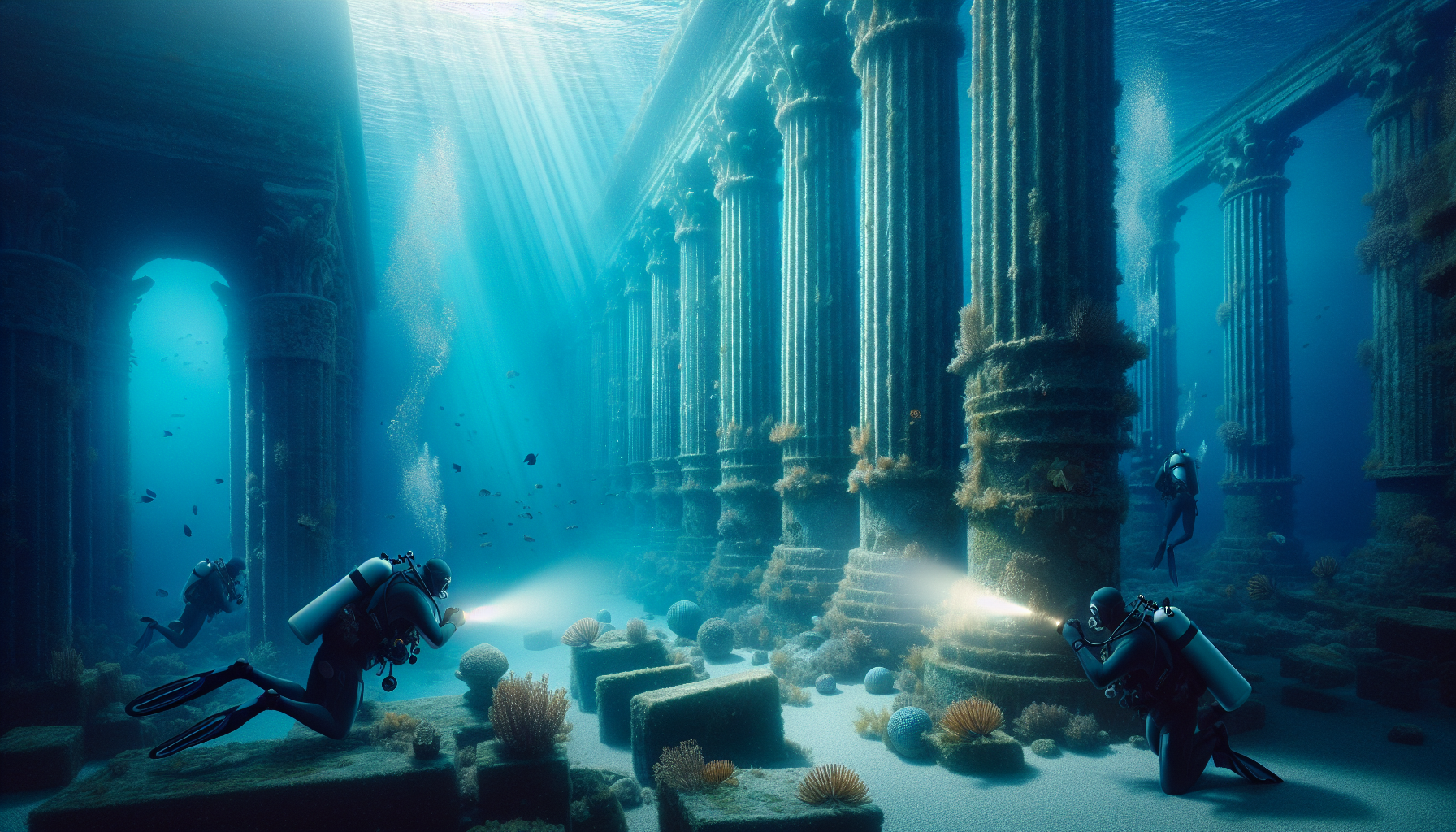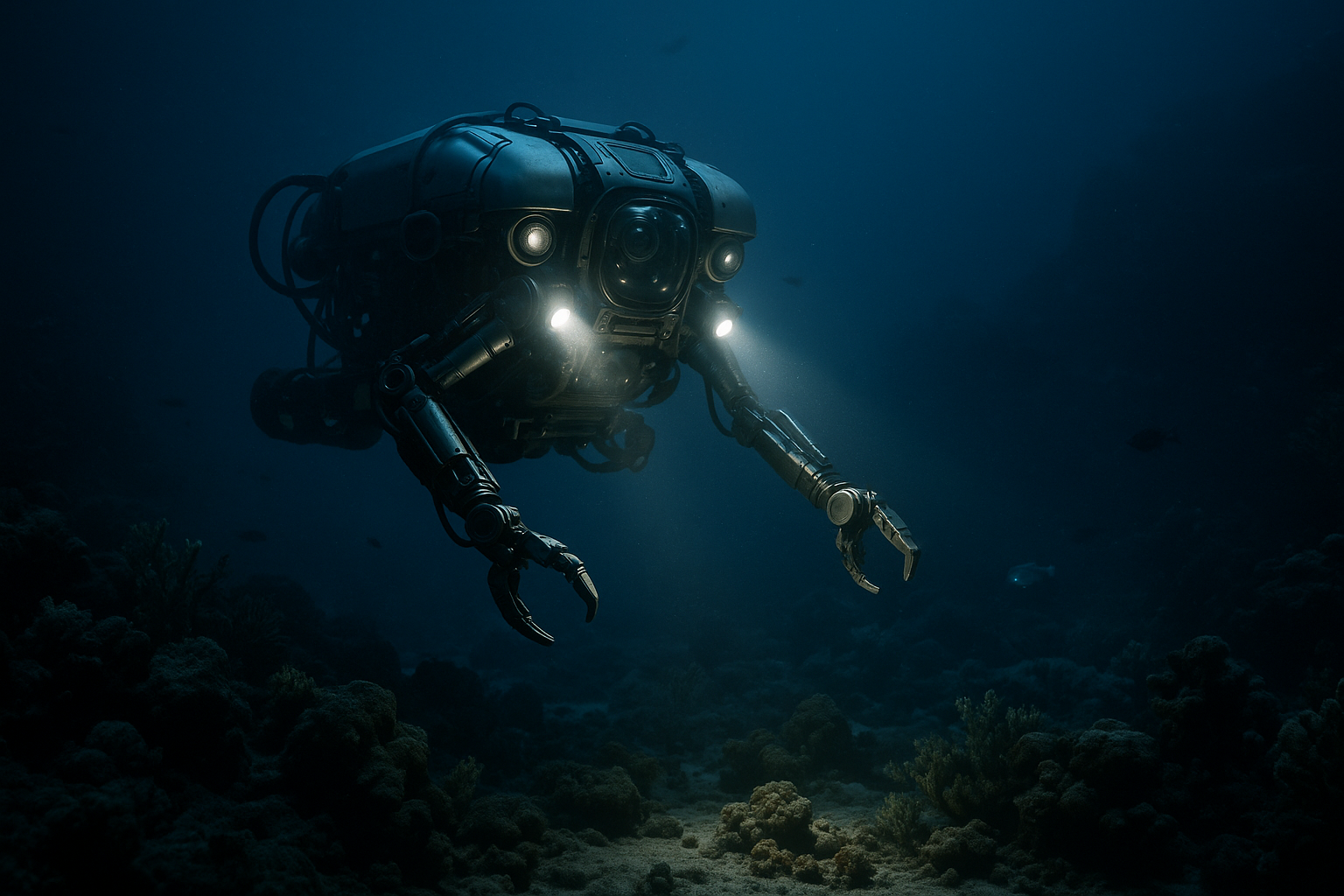In the vast, enigmatic expanse of our planet’s oceans, where sunlight barely pierces through and the silence is almost palpable, lies a world waiting to be discovered. This is not merely a realm of marine life and aquatic wonders, but a testament to human ingenuity and ambition — the fascinating domain of underwater architecture. From submerged ancient cities whispering secrets of bygone eras to modern marvels that push the boundaries of design and sustainability, underwater architecture presents a compelling narrative of creativity, resilience, and exploration. Welcome to “Submerged Secrets: Diving into the World of Underwater Architecture Exploration and Documentation,” where we embark on an extraordinary journey beneath the waves. 🌊
Throughout history, the allure of the ocean has inspired countless myths, legends, and artistic expressions. Yet, beyond the tales of mermaids and sunken ships, there lies a tangible and intriguing aspect of our relationship with the deep: the structures we have built and discovered beneath the sea’s surface. These submerged edifices not only challenge our perceptions of what is possible in architecture but also invite us to reconsider our connection with nature and history. In this exploration, we will dive into the depths of both time and technology, uncovering the stories of civilizations lost to the water and the innovative minds that continue to explore these aquatic frontiers today.
The article will unfold in three main segments, each delving into a unique facet of underwater architecture. First, we will journey through time to explore ancient submerged sites, such as the mystical city of Atlantis, the ruins of Dwarka in India, and the mysterious Yonaguni Monument in Japan. These sites offer more than just historical intrigue; they are archaeological treasures that pose questions about human civilization, climate change, and the relentless power of nature. Through these stories, we gain insights into the cultures that once thrived and the circumstances that led to their submersion.
Next, we will navigate the present landscape of underwater architecture, highlighting pioneering projects that reflect the intersection of design, technology, and environmental consciousness. From underwater hotels that offer guests unparalleled views of marine life to research facilities that facilitate groundbreaking oceanographic studies, these modern structures demonstrate the possibilities of sustainable development and innovation beneath the sea. We’ll explore the architectural challenges and technological advancements that make these projects possible, as well as the visionaries who dream beyond the surface.
Finally, we’ll cast our gaze toward the future, contemplating the potential of underwater living and urbanization as solutions to rising sea levels and population growth. As the effects of climate change become increasingly evident, architects and scientists are considering underwater habitats as viable alternatives for sustainable living. In this section, we’ll examine conceptual designs and initiatives that aim to create self-sufficient, eco-friendly communities under the sea. These visions are not just futuristic fantasies but feasible solutions that may redefine how we live in harmony with our planet.
By the end of this article, you will have journeyed through the hidden wonders of underwater architecture, gaining a deeper appreciation for the ingenuity and audacity of those who dare to dream and build beneath the waves. Whether you are a history enthusiast, an architecture aficionado, or simply someone fascinated by the mysteries of the ocean, this exploration promises to ignite your imagination and inspire new ways of thinking about our relationship with the underwater world. Dive in with us as we uncover the submerged secrets that lie just below the surface. 🌍
Exploring the Depths: A Journey into Underwater Architecture
Underwater architecture is a field that merges the intrigue of marine exploration with the creativity of architectural design. As we venture beneath the waves, we discover a hidden world filled with possibilities for innovation and sustainability. With advancements in technology and an increasing interest in marine ecosystems, underwater architecture is becoming a vital area of study for architects, engineers, and environmentalists alike. This exploration not only promises new opportunities for habitation but also offers unique insights into marine biodiversity and conservation efforts.
The allure of underwater architecture lies in its ability to blend seamlessly with the oceanic environment. This harmony is essential for ensuring that structures do not disrupt marine life or damage delicate ecosystems. Architects are challenged to design with both form and function in mind, creating structures that are not only aesthetically pleasing but also sustainable and environmentally friendly. The use of materials that resist corrosion and can withstand the immense pressure of deep-sea environments is paramount.
Furthermore, underwater architecture provides a unique platform for scientific research. Structures built beneath the ocean’s surface offer a closer look at marine life, facilitating studies on oceanic ecosystems and climate change. These architectural marvels serve as observation points and research stations, providing scientists with the opportunity to gather data and monitor changes in the environment over time. As such, the design and implementation of underwater architecture have far-reaching implications beyond human habitation, contributing to our understanding of the natural world.
The History and Evolution of Underwater Architecture
The concept of underwater architecture is not as modern as one might think. Historical records reveal attempts at building structures beneath the sea dating back to ancient civilizations. These early endeavors were primarily focused on creating underwater tunnels and bridges, facilitating transportation and trade across bodies of water. However, it was not until the 20th century that the idea of permanent underwater habitats began to take shape.
One of the earliest pioneers in underwater living was Jacques-Yves Cousteau, a French oceanographer and filmmaker who, along with his team, developed the Conshelf project in the 1960s. This series of underwater habitats allowed aquanauts to live and work beneath the sea for extended periods, paving the way for future developments in underwater architecture. The Conshelf project demonstrated the feasibility of underwater living, inspiring architects and engineers to explore the possibilities further.
In recent years, technological advancements have accelerated the evolution of underwater architecture. The development of new materials, such as high-strength concrete and corrosion-resistant alloys, has enabled the construction of more durable and sustainable underwater structures. Additionally, advances in robotics and artificial intelligence have improved the design and maintenance of these structures, allowing for greater autonomy and efficiency.
Technological Innovations in Underwater Architecture
The design and construction of underwater structures require specialized technologies that address the unique challenges of the marine environment. From the materials used to the methods of construction, each aspect must be meticulously planned to ensure the safety and stability of the structure. One of the most significant technological innovations in this field is the use of remotely operated vehicles (ROVs) and autonomous underwater vehicles (AUVs).
ROVs and AUVs are essential tools for underwater construction and maintenance. These vehicles can operate at depths beyond human reach, performing tasks such as site surveys, inspections, and repairs. Equipped with advanced sensors and cameras, they provide real-time data and imagery, allowing engineers to make informed decisions during the construction process. This technology not only enhances the efficiency of underwater projects but also reduces the risk to human life.
Another critical innovation is the development of airlock systems and life-support technologies that enable humans to live and work underwater. These systems maintain stable environmental conditions within the structure, ensuring a constant supply of oxygen and the removal of carbon dioxide. Moreover, advanced water filtration systems ensure a steady supply of clean water, while temperature control systems maintain a comfortable living environment. Together, these technologies create a sustainable habitat for humans beneath the waves.
The Environmental Impact of Underwater Architecture
The construction and operation of underwater structures have the potential to impact marine ecosystems significantly. As such, it is crucial to assess and mitigate any adverse effects these projects may have on the environment. One of the primary concerns is the disruption of marine habitats, as construction activities can disturb the seabed and displace marine life. To address this issue, environmental impact assessments (EIAs) are conducted before the commencement of any project.
EIAs evaluate the potential effects of a project on the environment, considering factors such as water quality, noise pollution, and habitat disruption. By identifying potential risks, architects and engineers can implement strategies to minimize the impact of construction activities. These strategies may include choosing construction sites with minimal ecological significance, employing noise-reducing technologies, and using materials that do not leach harmful substances into the water.
Moreover, underwater architecture can also contribute positively to marine ecosystems. Artificial reefs, for example, are structures designed to promote marine biodiversity by providing habitats for fish and other marine organisms. By incorporating elements of artificial reefs into underwater structures, architects can enhance the ecological value of their projects. This approach not only supports marine life but also promotes the conservation of natural habitats.
Case Studies: Innovative Underwater Structures
Several groundbreaking projects have demonstrated the potential of underwater architecture to benefit both humans and the environment. One notable example is the Underwater Room at The Manta Resort in Zanzibar. This floating structure features a submerged bedroom that offers guests a 360-degree view of the surrounding marine life. The design of the room incorporates sustainable materials and technologies, ensuring minimal impact on the surrounding ecosystem.
Another remarkable project is the Proteus Ocean Group’s underwater research station, designed to serve as a hub for marine research and exploration. The station features state-of-the-art laboratories, living quarters, and recreational facilities, enabling scientists to conduct long-term studies on oceanic ecosystems. The structure’s design prioritizes sustainability, incorporating renewable energy sources and advanced waste management systems.
These case studies highlight the potential of underwater architecture to create innovative solutions that address both human needs and environmental concerns. By combining cutting-edge technology with sustainable design principles, architects can create structures that enhance our understanding of the marine environment and promote the conservation of its precious resources.
ProjectLocationPurposeEnvironmental ImpactThe Manta ResortZanzibarHospitalityMinimal impact, promotes marine biodiversityProteus Ocean GroupGlobalResearchLow impact, utilizes renewable energy
Future Prospects and Challenges in Underwater Architecture
As the field of underwater architecture continues to evolve, new challenges and opportunities emerge. One of the most pressing challenges is the need for sustainable materials that can withstand the harsh marine environment. Research into biocompatible materials and innovative construction techniques is essential for the development of durable and environmentally friendly underwater structures.
Another challenge is the high cost of underwater construction. The complexity of building and maintaining structures beneath the sea requires significant financial investment, which can be a barrier to the widespread adoption of underwater architecture. However, as technology advances and economies of scale are realized, costs are expected to decrease, making underwater living more accessible to a broader audience.
Despite these challenges, the future of underwater architecture is promising. The growing interest in marine conservation and sustainable living is driving innovation in the field, leading to the development of new technologies and design strategies. As architects and engineers continue to push the boundaries of what is possible, the potential for underwater architecture to transform our relationship with the ocean is immense.
For a closer look at the fascinating world of underwater architecture, watch this engaging video on the latest innovations in the field:
Join the Conversation
We invite you to explore the potential of underwater architecture and share your thoughts on how it can shape the future of sustainable living. Whether you’re an architect, engineer, environmentalist, or simply an enthusiast, your insights and ideas are valuable in driving the conversation forward. Let’s dive into the possibilities and uncover the submerged secrets of underwater architecture together. 🌊
- What innovations are you most excited about in underwater architecture?
- How can underwater structures contribute to marine conservation efforts?
- What challenges do you think are most significant in the development of underwater habitats?

Conclusion
As we emerge from the depths of our exploration into the captivating world of underwater architecture, it is essential to reflect on the myriad aspects that make this field both fascinating and crucial for our understanding of history and the environment. Throughout this article, we’ve navigated the evolution of underwater architecture, the innovative technologies facilitating its exploration, and the profound significance of documenting these submerged secrets.
We began our journey by examining the historical context and evolution of underwater architecture. From ancient civilizations constructing submerged structures to contemporary marvels like underwater hotels and research stations, it is clear that humanity’s intrigue with aquatic environments is not a modern phenomenon. This historical perspective highlights how societies have long sought to harness the resources and strategic advantages offered by underwater spaces.
The technological advancements in underwater exploration have been pivotal in unlocking these submerged secrets. Modern innovations such as remotely operated vehicles (ROVs), advanced diving gear, and sonar mapping have revolutionized our ability to explore and document underwater sites with unprecedented precision and safety. These technologies not only enable us to capture stunning visuals and collect valuable data but also ensure the preservation of these sites for future generations.
Documenting underwater architecture is not just an academic exercise; it holds profound implications for our cultural heritage and environmental conservation efforts. By meticulously recording these sites, we can piece together historical narratives, understand ancient construction techniques, and appreciate the cultural significance of these structures. Moreover, documenting underwater architecture can aid in environmental monitoring, helping us track changes in marine ecosystems and assess the impact of human activities on these fragile environments.
The exploration and documentation of underwater architecture also have the power to inspire and educate. By sharing the beauty and mystery of these submerged worlds, we can foster a deeper appreciation for our planet’s diverse history and ecosystems. This inspiration can drive innovation in sustainable architectural practices, encouraging architects and engineers to incorporate elements of underwater design into their work, promoting harmony between built environments and natural ecosystems.
In conclusion, the exploration and documentation of underwater architecture represent a confluence of history, technology, and environmental stewardship. As we continue to uncover these submerged secrets, it is imperative that we do so with a sense of responsibility and respect for the delicate balance of our planet’s ecosystems. By sharing this knowledge, we can inspire future generations to cherish and protect our underwater heritage.
We encourage you, our readers, to dive deeper into this fascinating subject. Share your thoughts, comments, and insights on underwater architecture exploration and documentation. Discuss how this field can shape our understanding of history and our approach to environmental conservation. Share this article with others who may be intrigued by the mysteries that lie beneath the surface, and consider how the lessons learned from underwater architecture can be applied to create a more sustainable and harmonious future.
Together, let us continue to explore and preserve the submerged secrets of our world, ensuring that they remain a source of wonder and inspiration for generations to come. 🌊
For further reading and exploration, we recommend visiting these sources:
1. National Geographic’s exploration of underwater archaeology National Geographic.
2. UNESCO’s World Heritage Centre’s insights on underwater cultural heritage UNESCO.
By engaging with these resources, you can further enrich your understanding and appreciation of this captivating field. Happy exploring!
Toni Santos is a visual storyteller and archival artist whose work dives deep into the submerged narratives of underwater archaeology. Through a lens tuned to forgotten depths, Toni explores the silent poetry of lost worlds beneath the waves — where history sleeps in salt and sediment.
Guided by a fascination with sunken relics, ancient ports, and shipwrecked civilizations, Toni’s creative journey flows through coral-covered amphorae, eroded coins, and barnacle-encrusted artifacts. Each piece he creates or curates is a visual meditation on the passage of time — a dialogue between what is buried and what still speaks.
Blending design, storytelling, and historical interpretation, Toni brings to the surface the aesthetics of maritime memory. His work captures the textures of decay and preservation, revealing beauty in rust, ruin, and ruin’s resilience. Through his artistry, he reanimates the traces of vanished cultures that now rest on ocean floors, lost to maps but not to meaning.
As the voice behind Vizovex, Toni shares curated visuals, thoughtful essays, and reconstructed impressions of archaeological findings beneath the sea. He invites others to see underwater ruins not as remnants, but as thresholds to wonder — where history is softened by water, yet sharpened by myth.
His work is a tribute to:
The mystery of civilizations claimed by the sea
The haunting elegance of artifacts lost to time
The silent dialogue between water, memory, and stone
Whether you’re drawn to ancient maritime empires, forgotten coastal rituals, or the melancholic beauty of sunken ships, Toni welcomes you to descend into a space where the past is submerged but never silenced — one relic, one current, one discovery at a time.




